Getting Started with Plotly Studio
Follow this guide to learn how to create an app from a dataset in Plotly Studio. To get started, if you haven't already, download and install Plotly Studio.
Opening Plotly Studio and logging in
When you open Plotly Studio, select Login to get started or log in with Dash Enterprise. See the Installing and Setting Up Plotly Studio page for more details on installing and logging into Plotly Studio for the first time.
Creating a project
When you log in for the first time, Plotly Studio opens on the New Project page where you can start creating your app. In Plotly Studio, a Project holds your app’s data, the prompts used to generate the app, and generated code.
The next time you open Plotly Studio you’ll be taken to a list of existing projects, where you can select + New Project to start a new project.

Uploading data
The dataset that you choose for your app must be a CSV or Parquet file and cannot be larger than 200 MB.
Drag and drop a your dataset file or select and choose a file to upload, and then select Next.

If you don't have a dataset to use, select Try sample data.
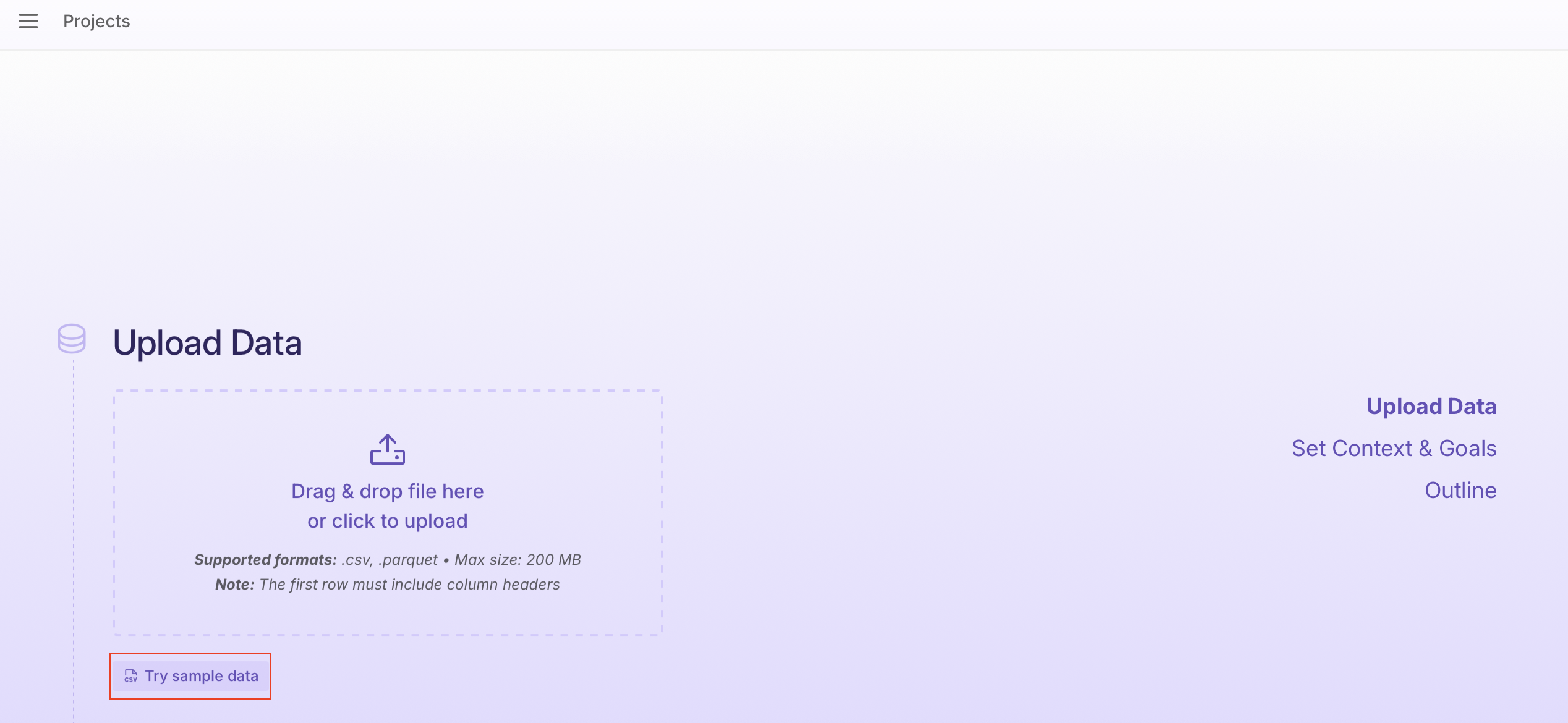
Setting context and goals
Provide additional context and goals to Plotly Studio if you'd like to guide Plotly Studio's generation of your initial app and select Done. For example, you can tell Plotly Studio about specific charts or types of analysis you'd like to see. Select Skip if you don't want to provide additional context or goals. Plotly Studio will still be able to generate an app based on just your dataset.
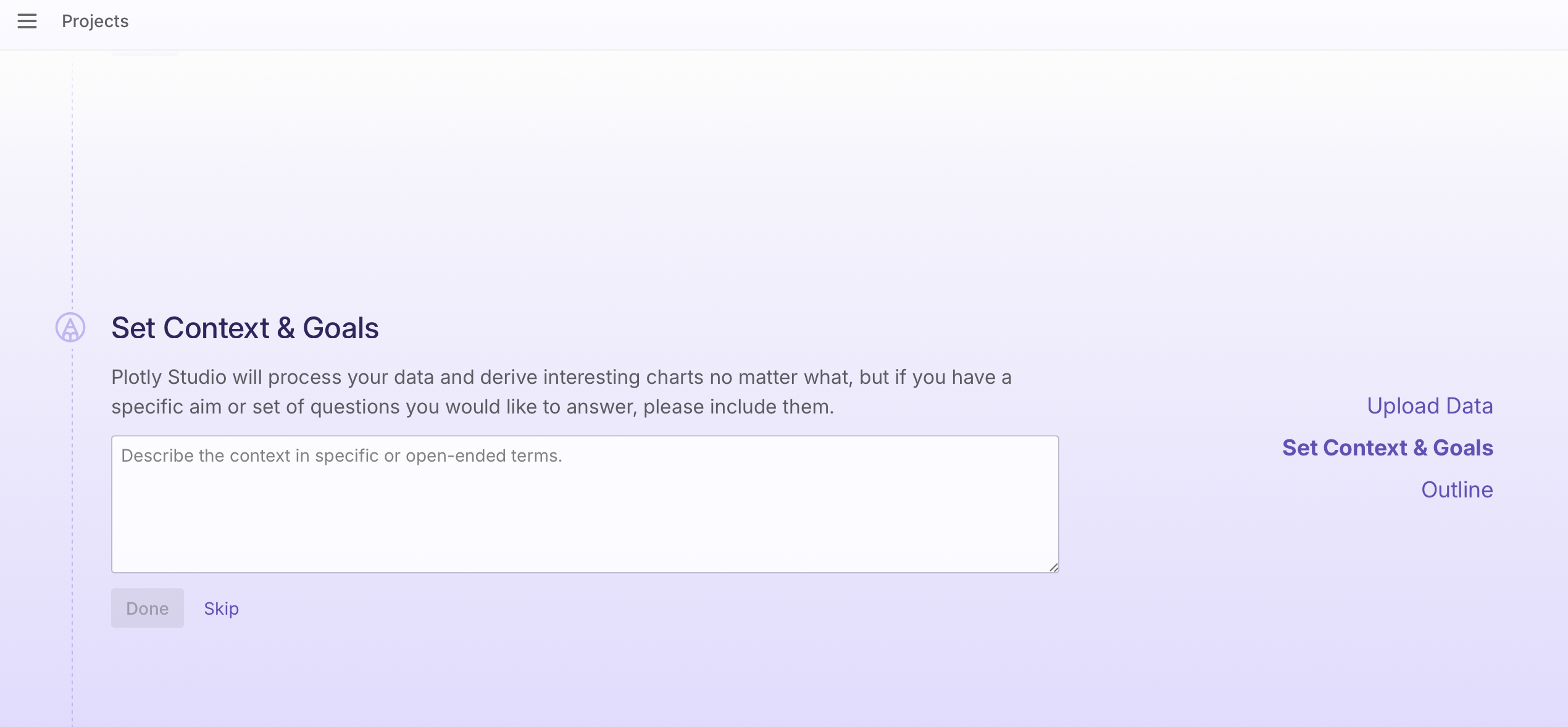
Context and goals tips
Here are some ideas to help you guide Plotly Studio during app generation:
- A brief description of the analysis you'd like Plotly Studio to do with the data.
- Details about the dataset that may help Plotly Studio with its analysis. For example, details about the dataset origin or how to interpret it.
- A list of questions you would like the analysis to answer.
- A list of columns in the data that you’d like Plotly Studio to focus on.
- Details about the type of charts you would like to see.
Generating the app
Plotly Studio generates an outline of the app it's going to build. This outline has initial prompts that describe different aspects of the app at a high level. The outline also contains a Title and Description, which will appear in the generated app.
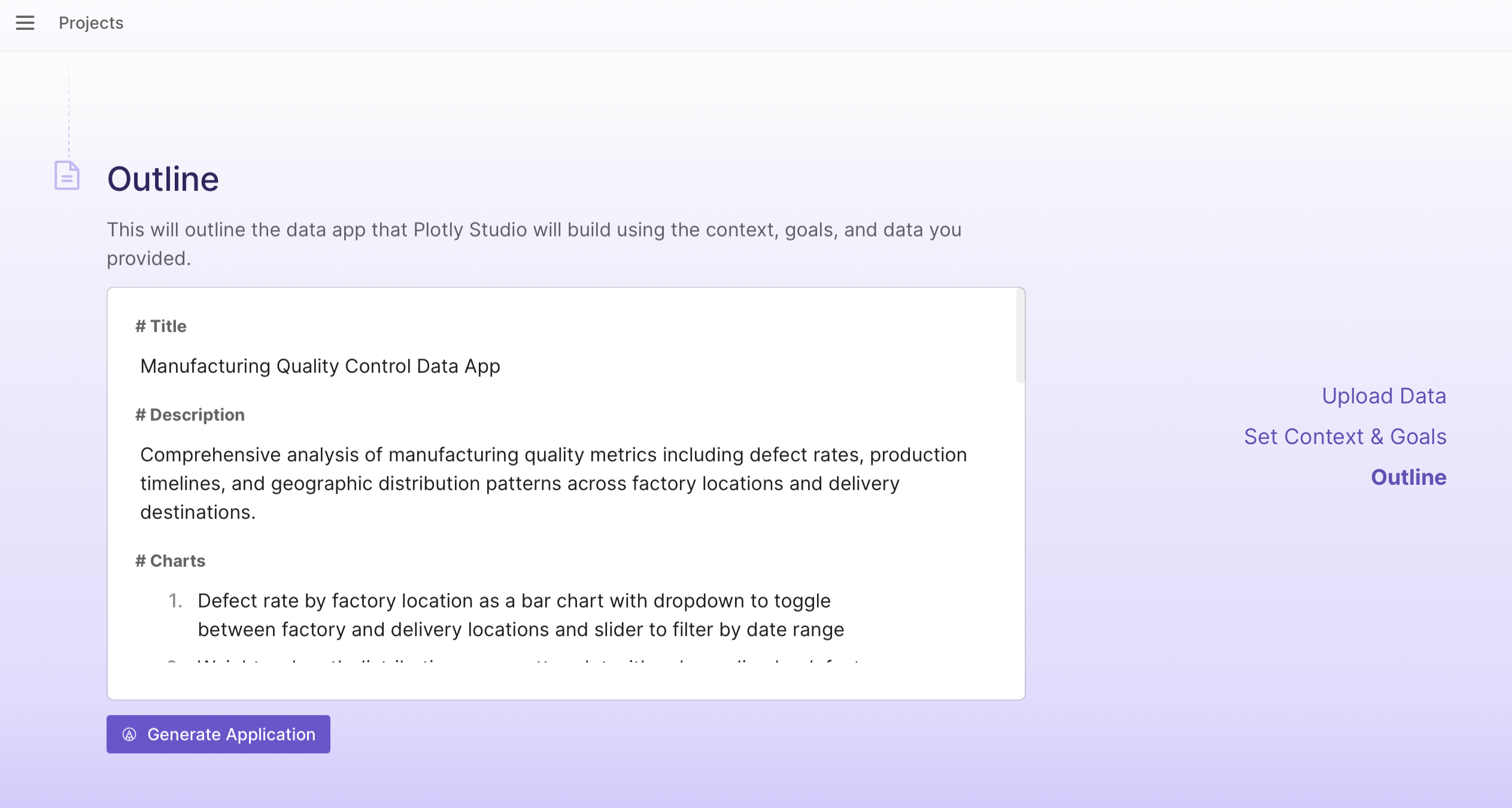
Make any changes you'd like to the app outline and select Generate Application. For example, you can add or remove charts, or provide additional instructions on how you'd like to see the app themed.
Plotly Studio starts generating your app based on the app outline. Once the generated app is ready, on the App Summary page, you'll see a preview.
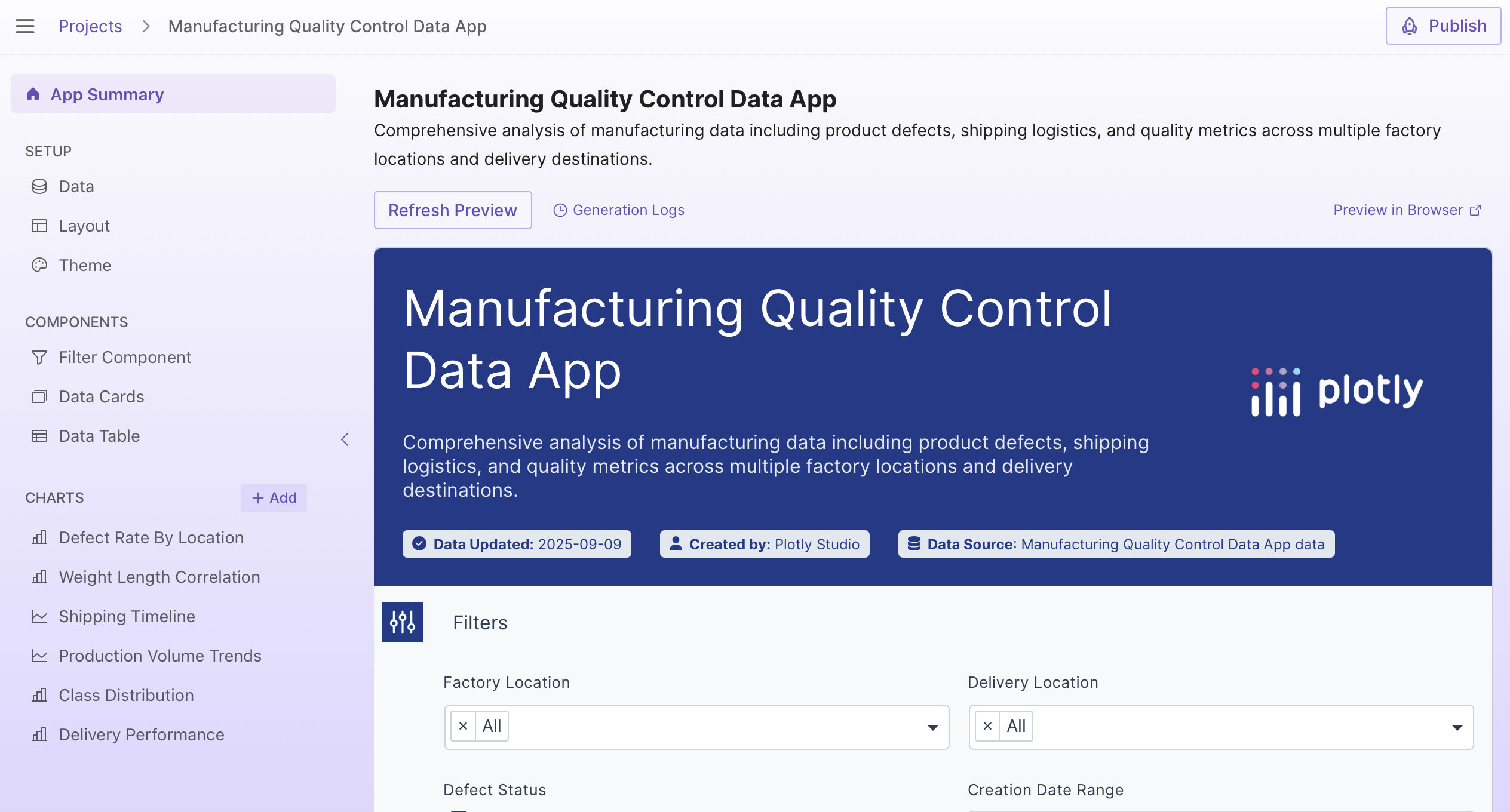
Making changes to the app
From the sidebar on the left, you’ll find menu options to view and update specific parts of the app:
Setup:
- Data - How data for the app is transformed.
- Layout - How the app is structured, what components it includes, and the order in which they are displayed.
- Theme - How the app is styled, and what colors and typography it uses.
Components:
- Filter component - Global filters that filter data used in other components, the data cards, data table, and charts.
- Data cards - Summary statistics and key metrics.
- Data table - Tabular view of the data.
- Charts - Visualizations of the data.
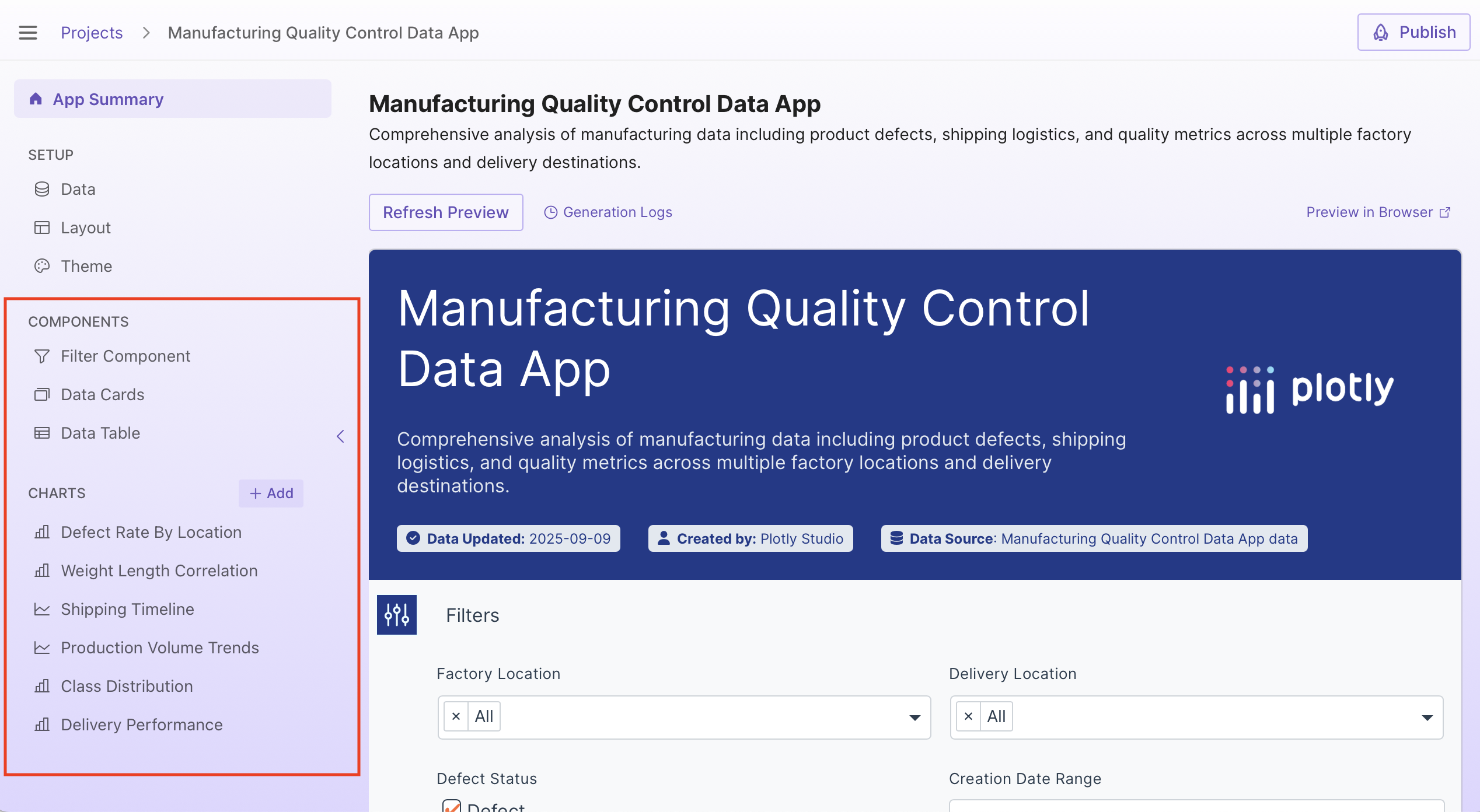
Overview
Select an option and you'll see a prompt, a preview, a specification, and code:
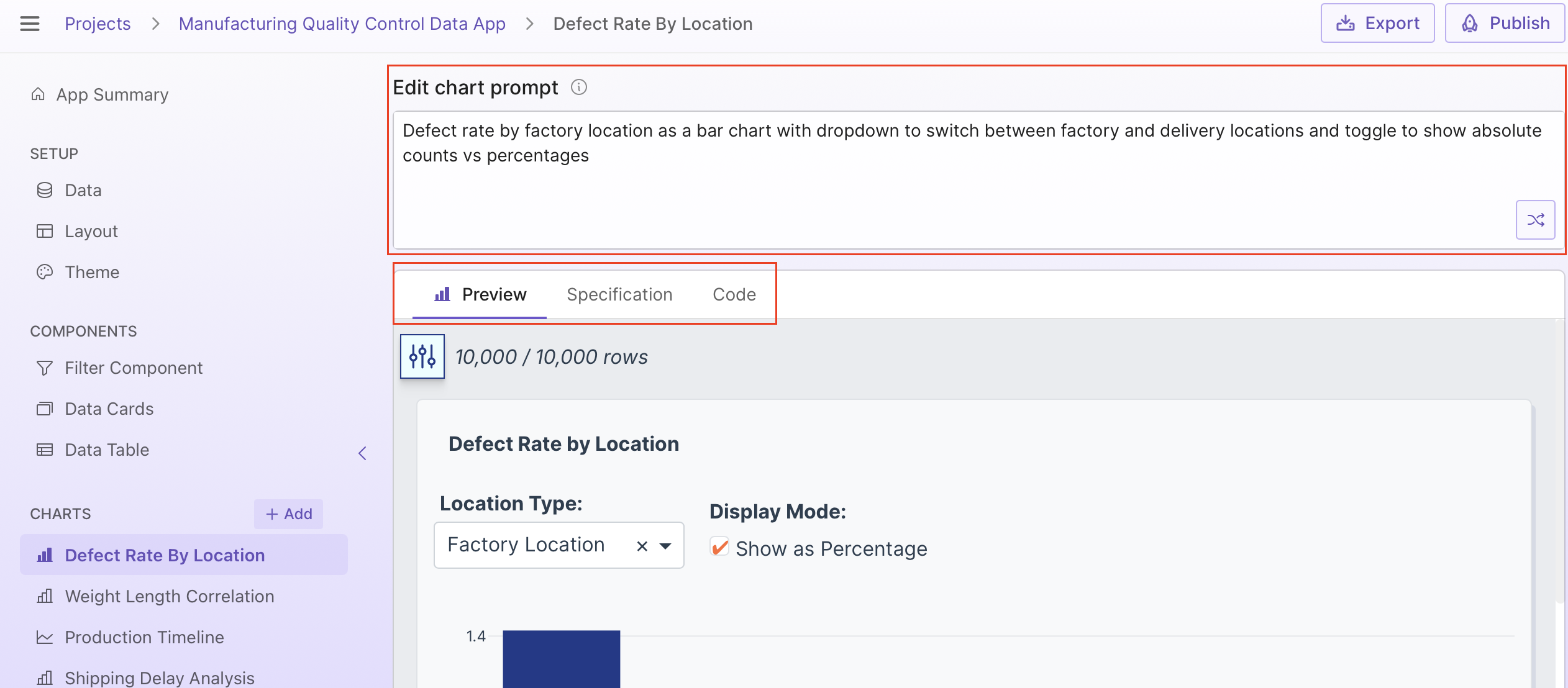
You can also access this page for viewing and editing a specific part of the app from the app preview on the App Summary page:
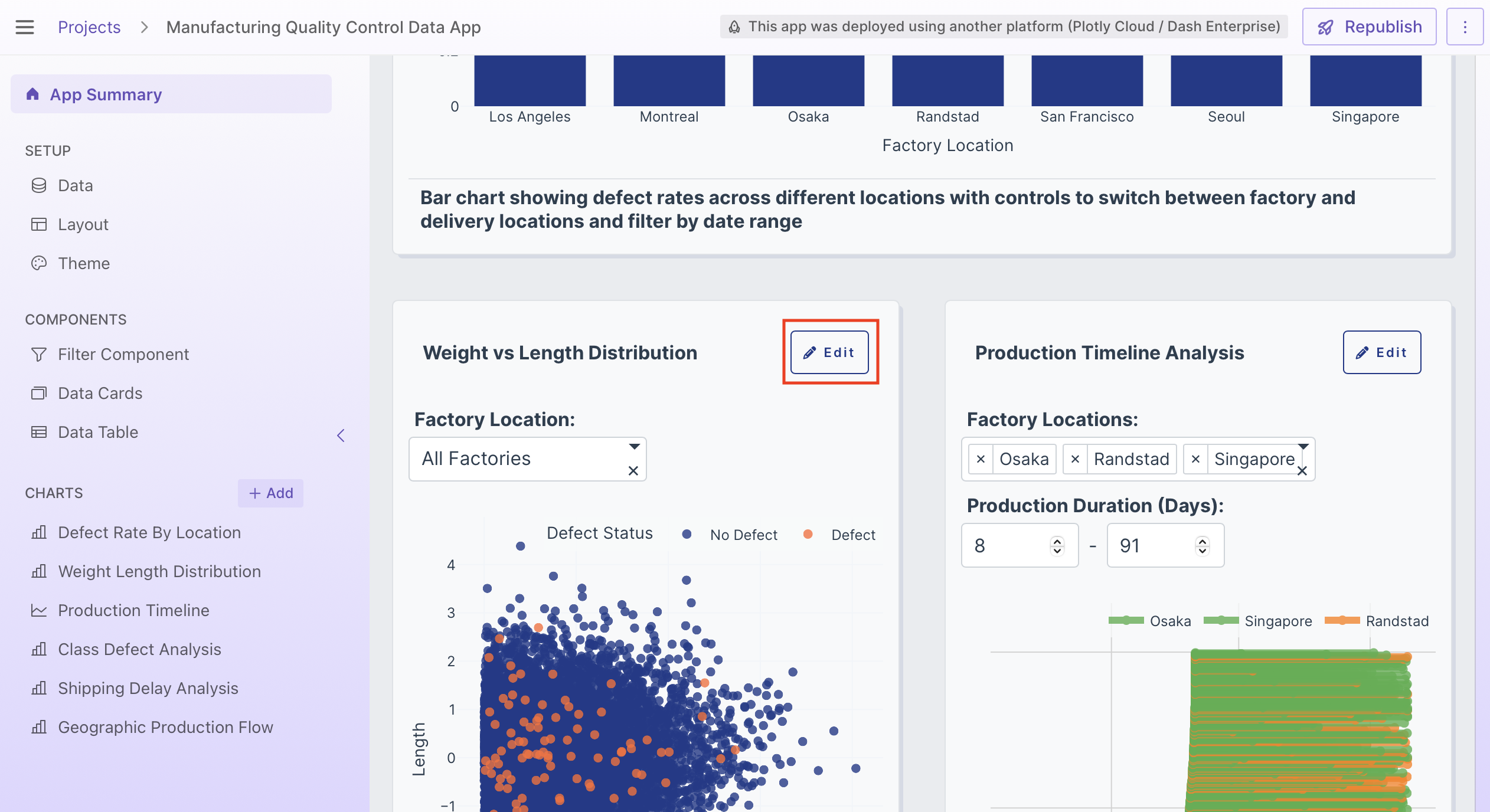
Prompt
The prompt is a high-level description of this specific part of the app. Updates to the prompt regenerate the app and update the preview.
Preview
This is a preview of this specific part of the app. Note: A preview is not available for the Layout.
Specification
The specification is a natural language description of the Python code. When updating the prompt, you can copy parts of the specification into the prompt if there are parts of the existing app that you want to retain.
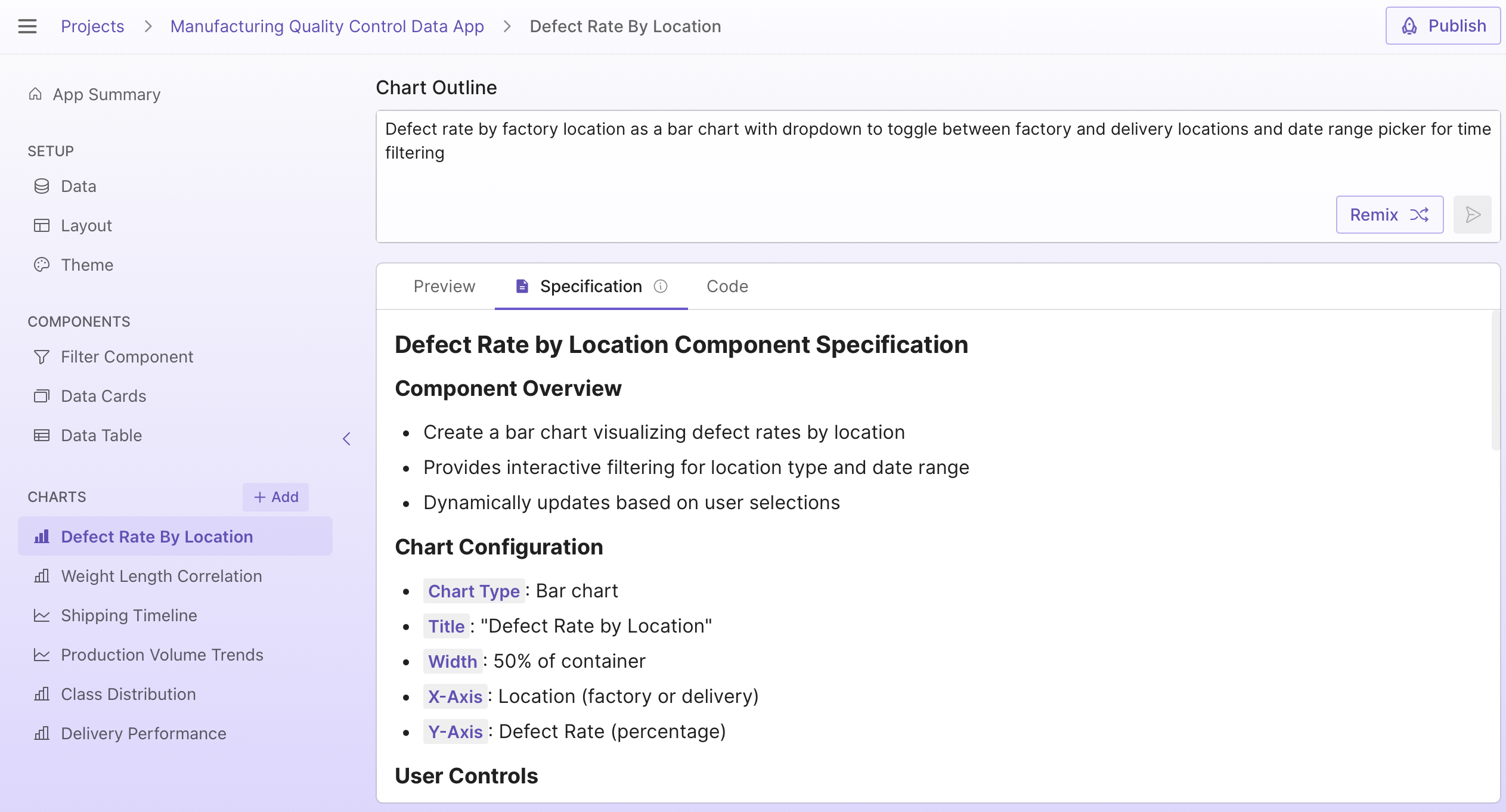
Code
Editable Python code that uses Dash, Plotly, and other Plotly libraries. It is what powers the app and preview and is published to Plotly Cloud. It updates when you make prompt updates.
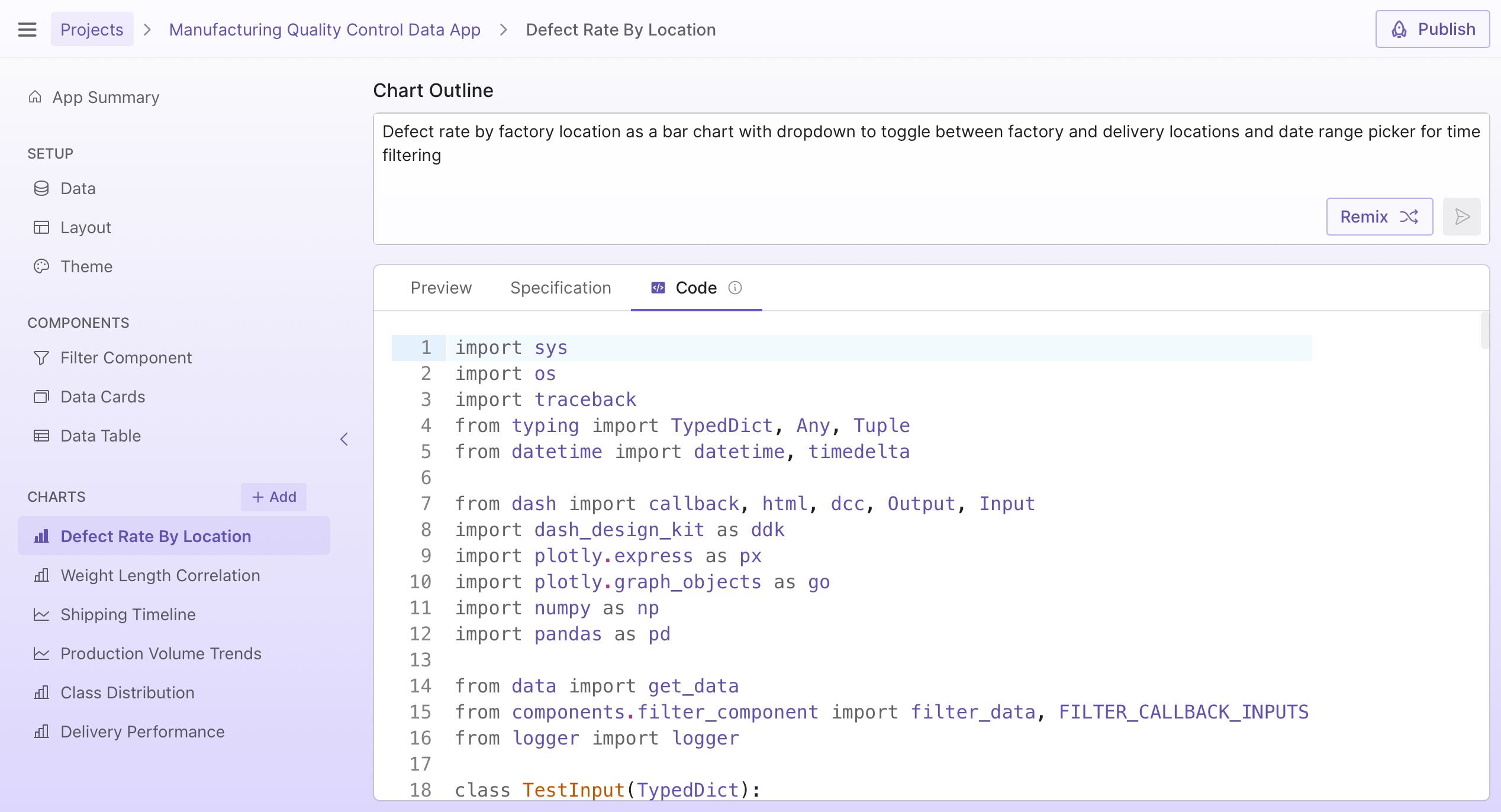
See the Working with Code in Plotly Studio page for a complete guide to how Plotly Studio generates code and how to make updates.
Editing the prompt
To update any part of your app, edit its prompt and select the regenerate button.
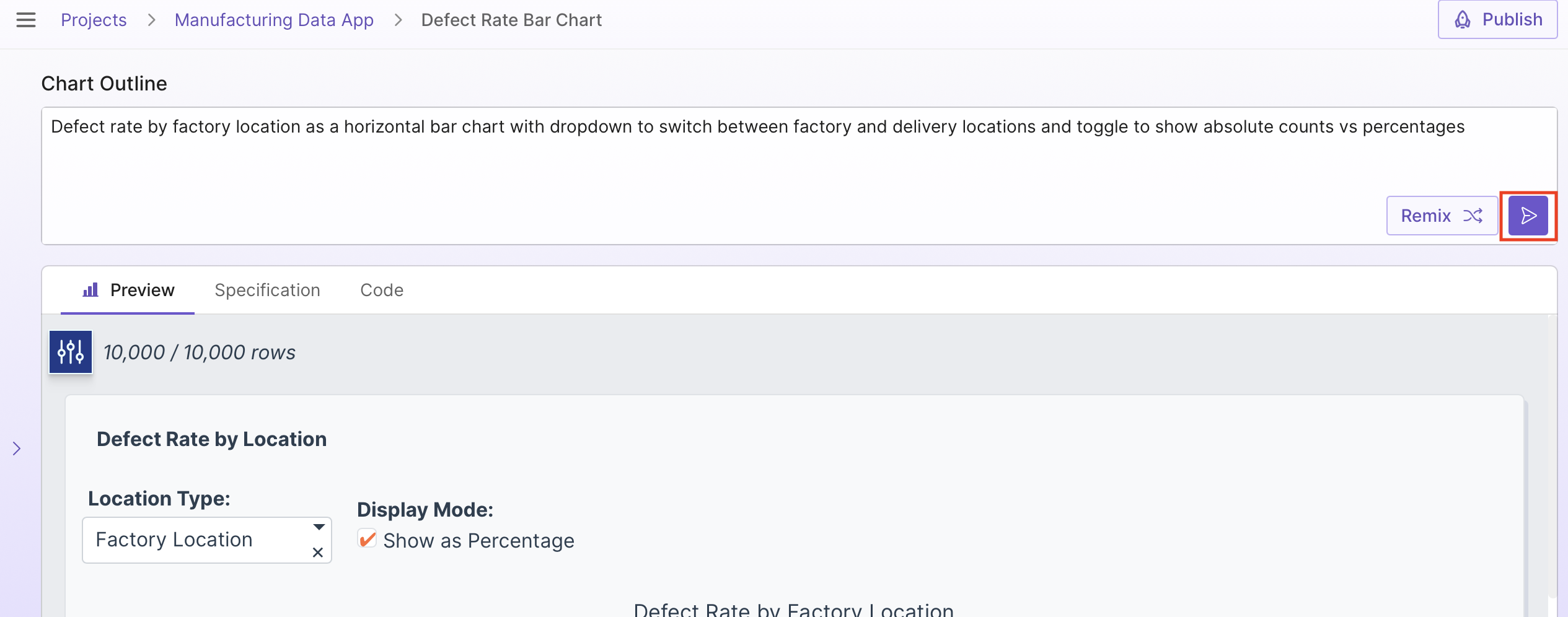
Remix
You can also generate a new version using the existing prompt with the Remix option:
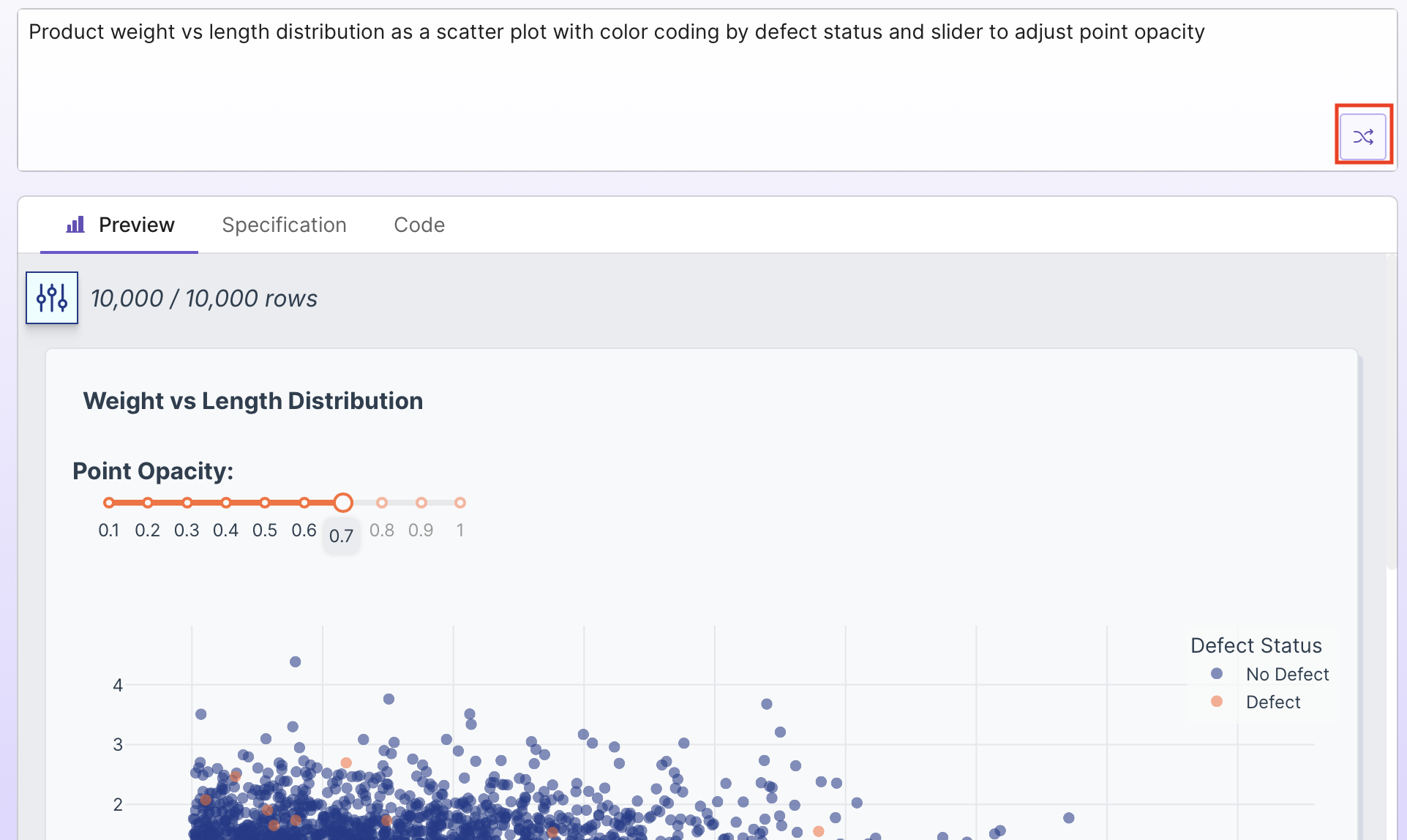
Info
You won't see the Remix option if you have made changes to the text in the prompt box but haven't regenerated.
Regeneration using a new prompt or remixing with the existing prompt updates the preview, specification, and code.
Editing the code
If you have a plan that supports it, you can also update the code directly from the Code tab. For themes, the code is a Dash Design Kit theme file.
Adding and removing components
An app's data cards, data table, and charts can be deleted. To delete a component, hover over the component name in the sidebar and select its delete button:

You can also add additional charts. To add a new chart:
-
Select + Add in the charts section in the sidebar:

-
Describe the type of chart you'd like to add to the app and select Add chart.
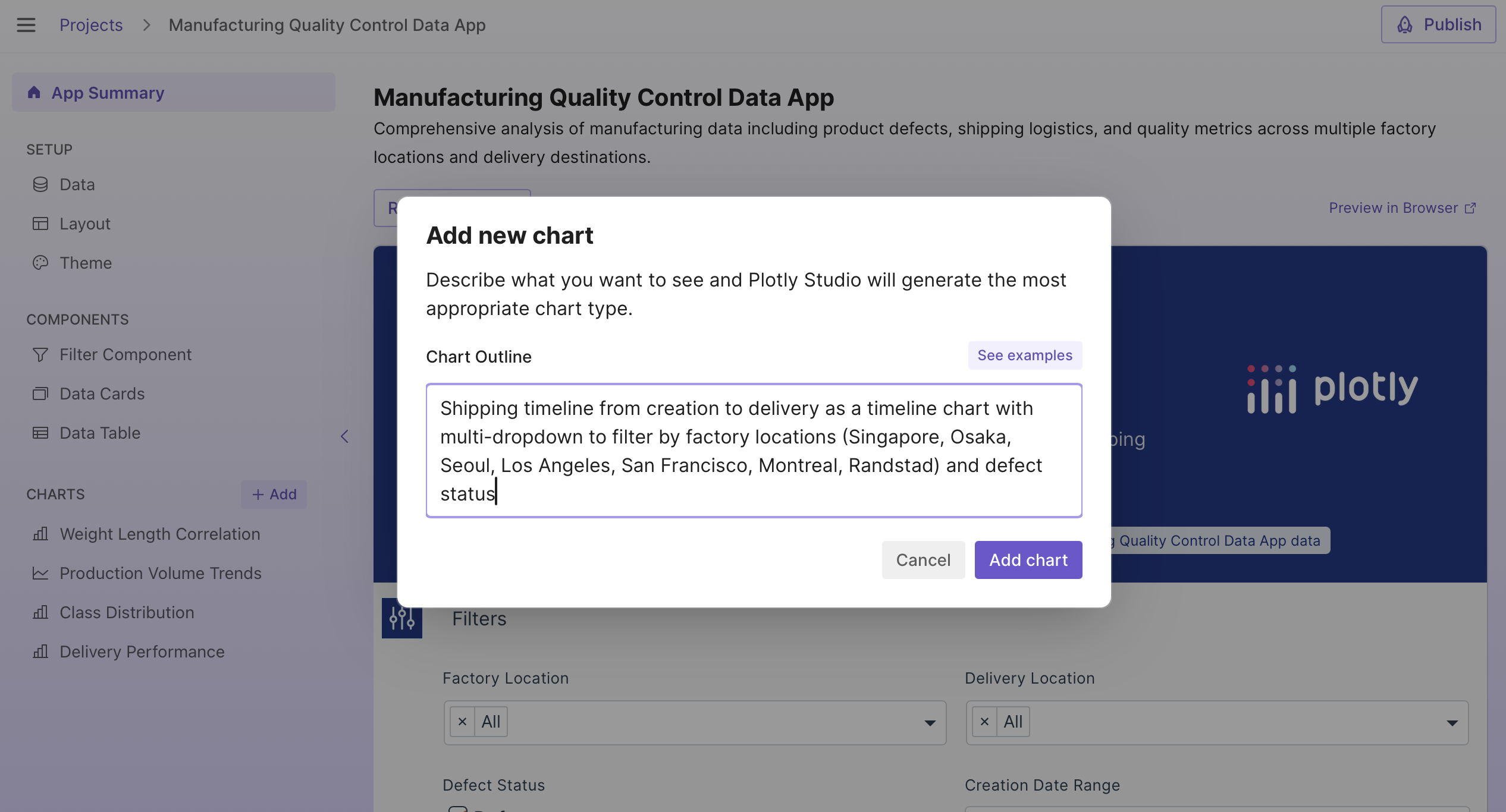
Publishing the app
Once you are happy with your app, you can publish it to Plotly Cloud or Dash Enterprise by selecting Publish.

Select the link displayed to go to the app:
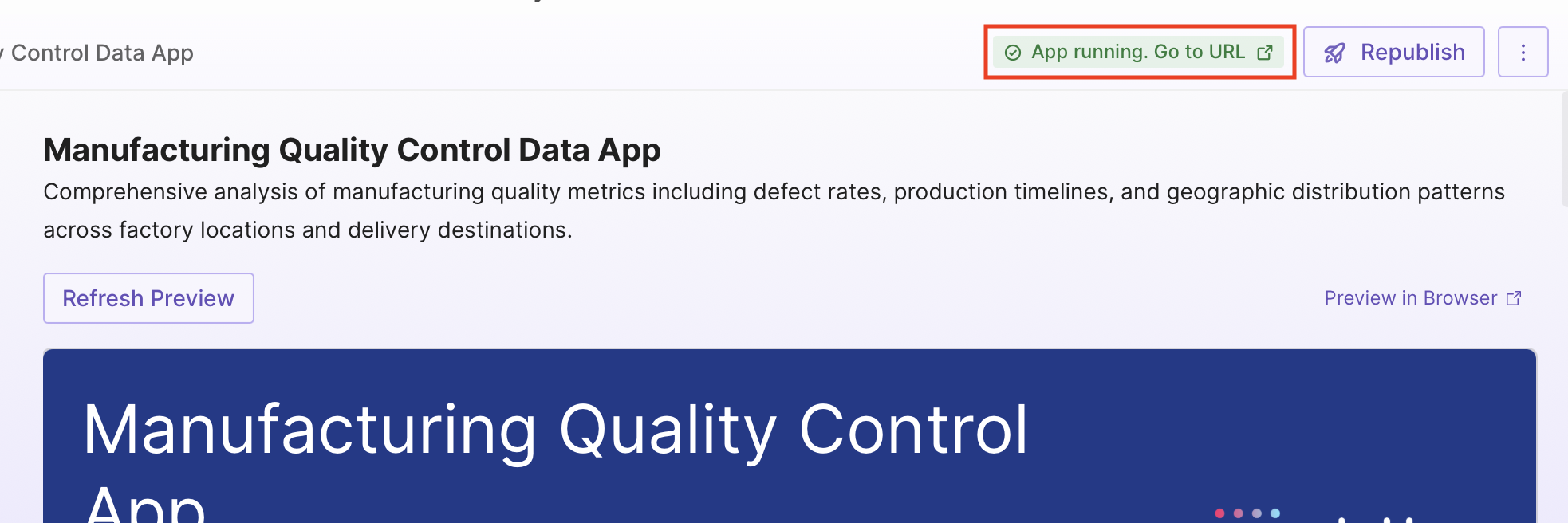
After making changes to the app, update the published live app using Republish:
